Convict History
Fremantle's beginning was different from colonies on the east coast of Australia in that it was originally populated by people who migrated by choice. However, as seems inevitable when it comes to white Australian history, within 40 years convicts would outnumber the free folk 10 to 1. Fremantle was founded and established as a "free settlement" when approximately four hundred settlers (civilian and military) arrived on the HMS Sulphur and Parmelia in June 1829. They had survived the voyage from England to Western Australia (four months aboard a 36-metre vessel) only to discover that life in Western Australia was harder than they had predicted. Given the harsh climate and poor sandy soil, settlers were barely keeping themselves alive. It became obvious that more manpower was needed to build vital communications, transport and administrative framework if the colony was to succeed. The British government made the decision, regardless of the public opinion or promise, and in November 1849 it was officially announced that The Swan River Colony had been ‘constituted a penal settlement’ to accelerate the economic growth.
The first 75 convicts arrived in 1850 on the Scindian from Portsmouth to be followed by over nine thousand more convicts by 1868. (http://www.fremantlewesternaustralia.com.au/fremantle-history.htm) These men (yes, they were all men) are responsible for building many of the historic limestone buildings we see around town today.
Those who know me might be surprised by the amount of history in this post. Dave and I have been sitting in on lectures for the Australian history class our study abroad students are required to take. It has been so interesting! The founding of a country by a population of mostly convicts is fascinating to think about; you might have noticed that the larger buildings back then where the asylum and the prison. But I have also been really interested to learn how the displacement and treatment of indiginous Australians are discussed.
The Nyoongar people have called this corner of Western Australia home for over 45,000 years before the uninvited arrival of settlers in the early 1800's. The eventual fates of the indigenous Australian populations have been displacement, marginalization, loss of identity and culture, and at times near genocide. In class we watched the 2 part mini-series The Secret River (http://www.imdb.com/title/tt2298264/) to illustrate the complicated motivations and fears on all sides at the time. I would encourage anyone interested to check it out on Netflix. The instructor challenged us to reflect on wether the violence and negative outcomes of the time were inevitable given the situation and vast cultural differences between groups, or could things have played out differently? The modern repercussions of that history are profound. As evidenced by the rates of poverty, incarceration, chronic diseases, and lack of political and societal representation.
Thinking and learning about this history has naturally led me to comparisons with North American colonization and white Americas attitudes towards Native Americans. Sadly, the anecdotal evidence I have seen play out in my own experience and interactions with peers has revealed either fetishization of Native American culture or outright distain for it's people and their desire to maintain their cultural traditions. But mostly, I think we willfully ignore the uglier aspects of that period.
But I digress...
In spite of certain similarities related to colonization and treatment of indigenous people, Australia and the United States are very different countries. And I have been impressed with the University of Notre Dame, Australia as an exceptional example of intentional and well thought out intercultural respect. Acknowledgment of the Nyoongar people as the original inhabitants of the land is engrained in the culture. The first week of the semester all new international students participate in a 'Welcome to Country' ceremony lead by a local elder. And all the art on the walls around the college is by Nyoongar painters. (Except for the cross that is in every room. It is Notre Dame, after all.) The paintings are everywhere and they are gorgeous!

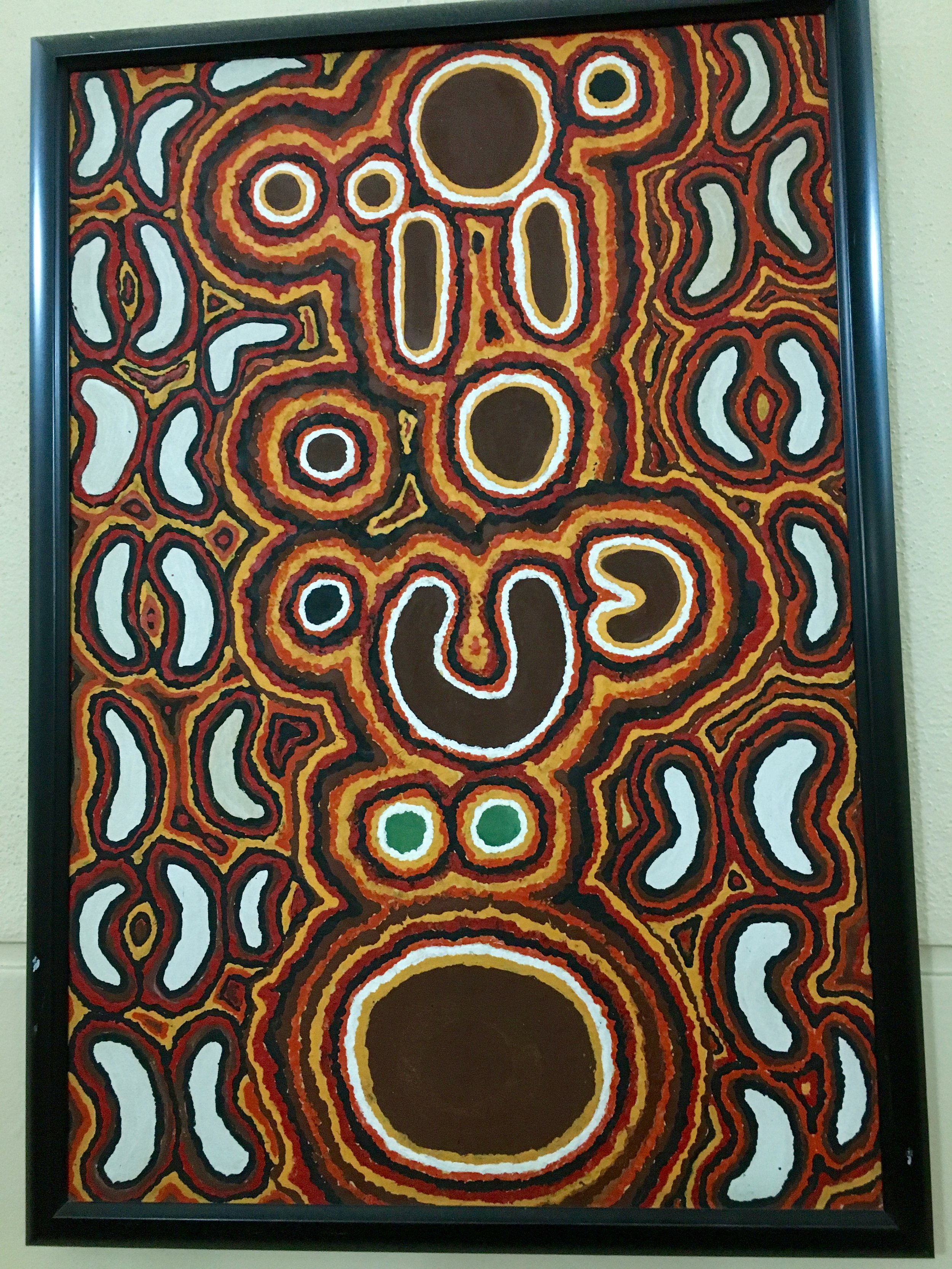

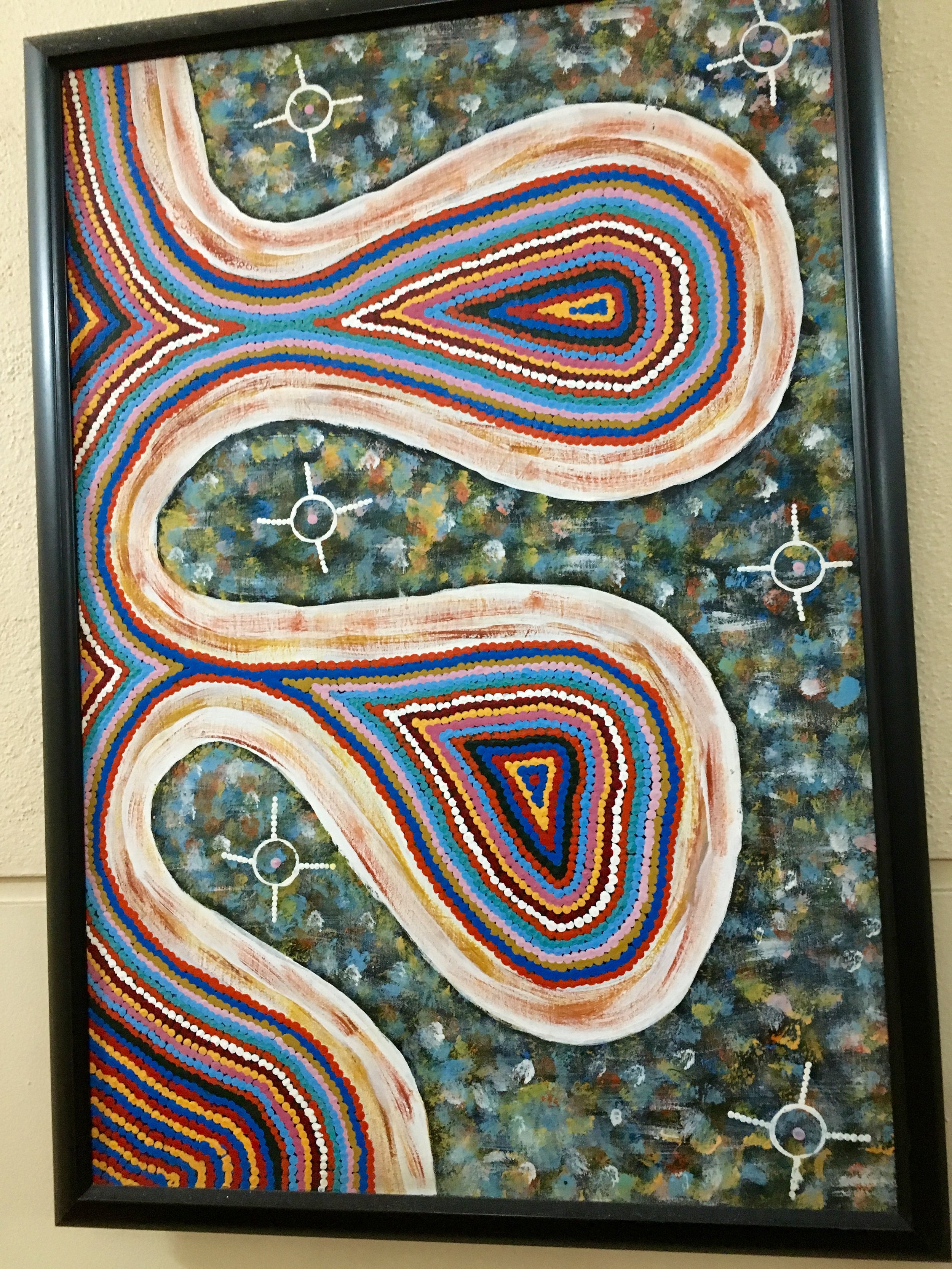

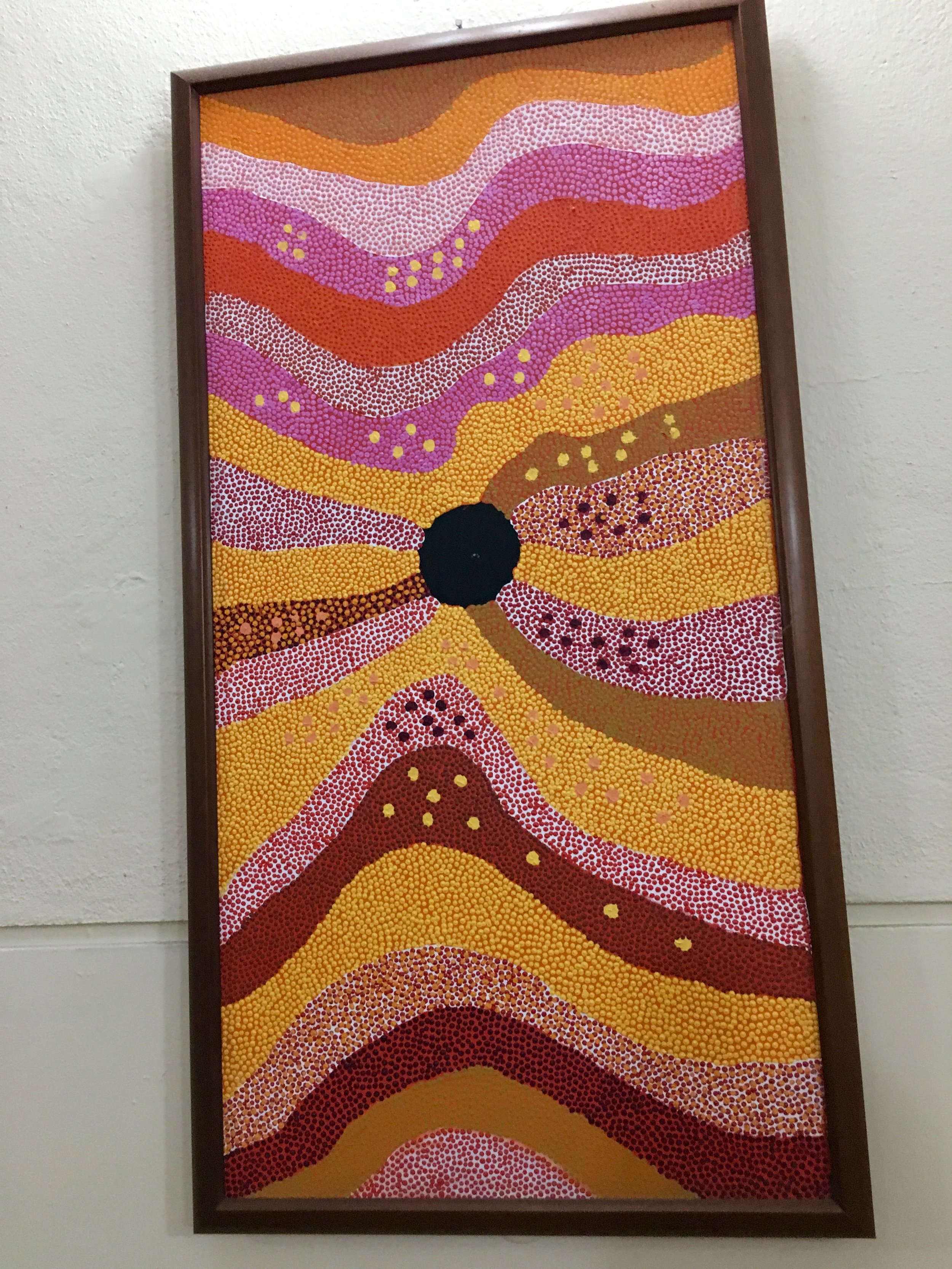
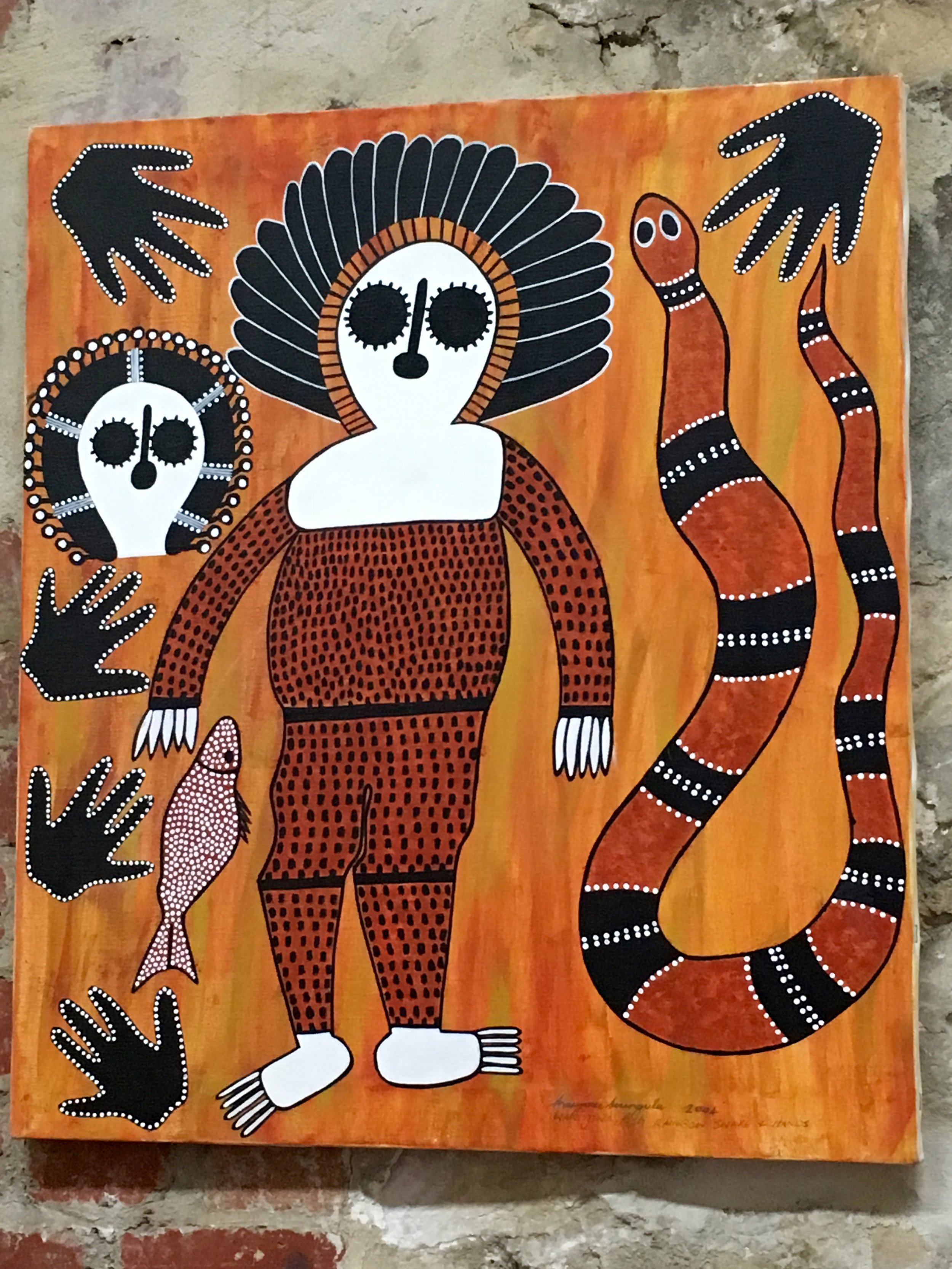
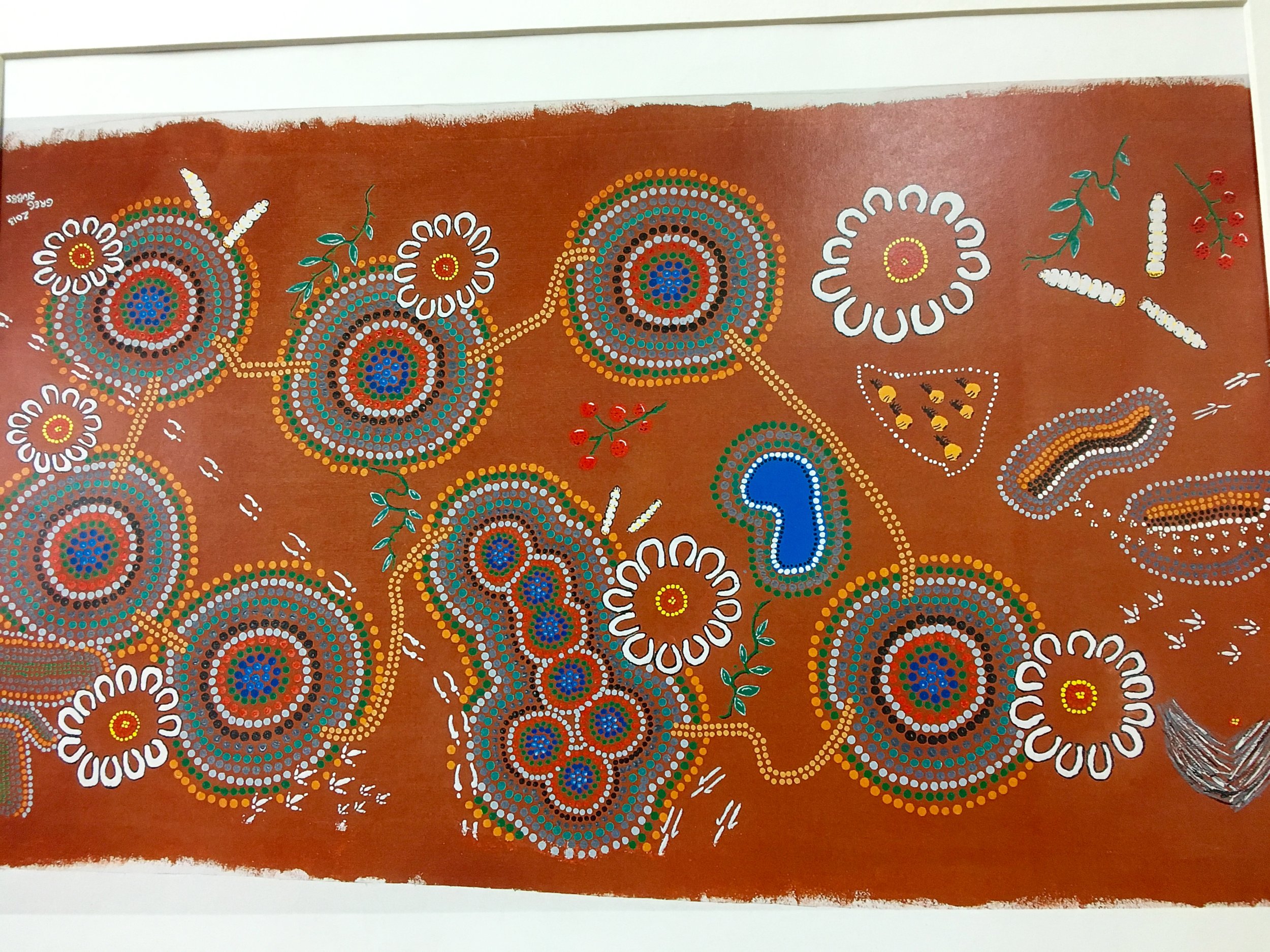
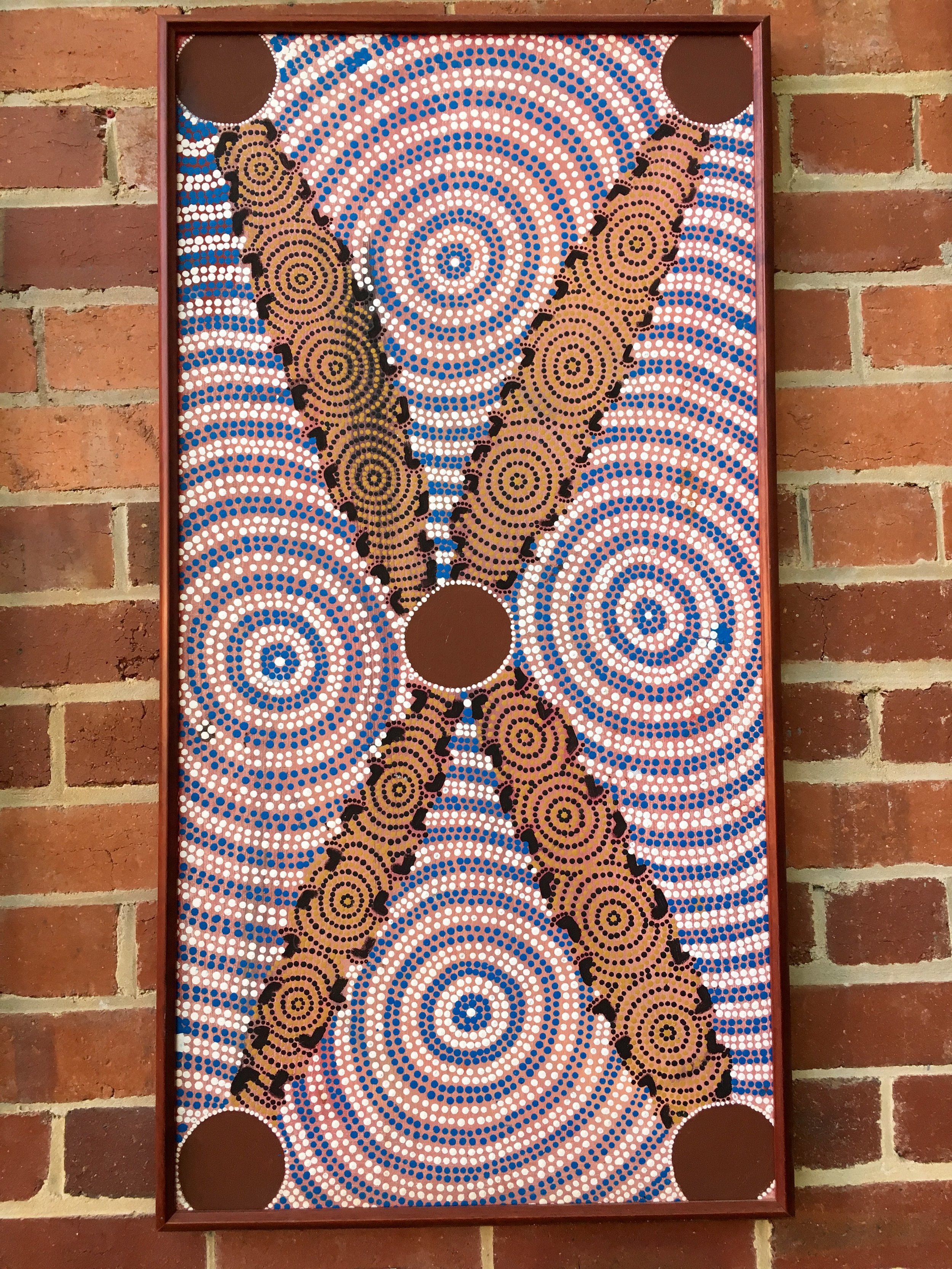
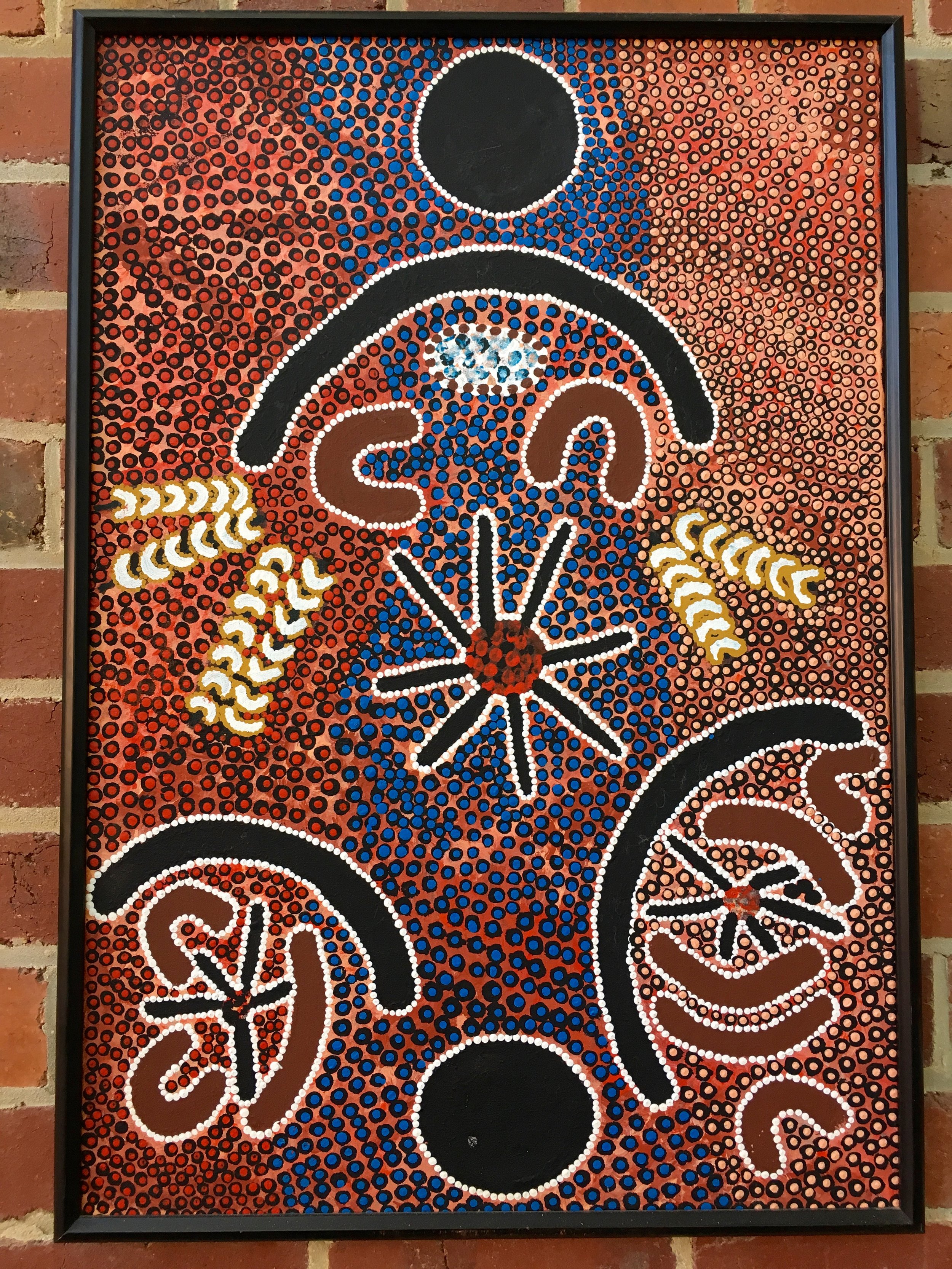
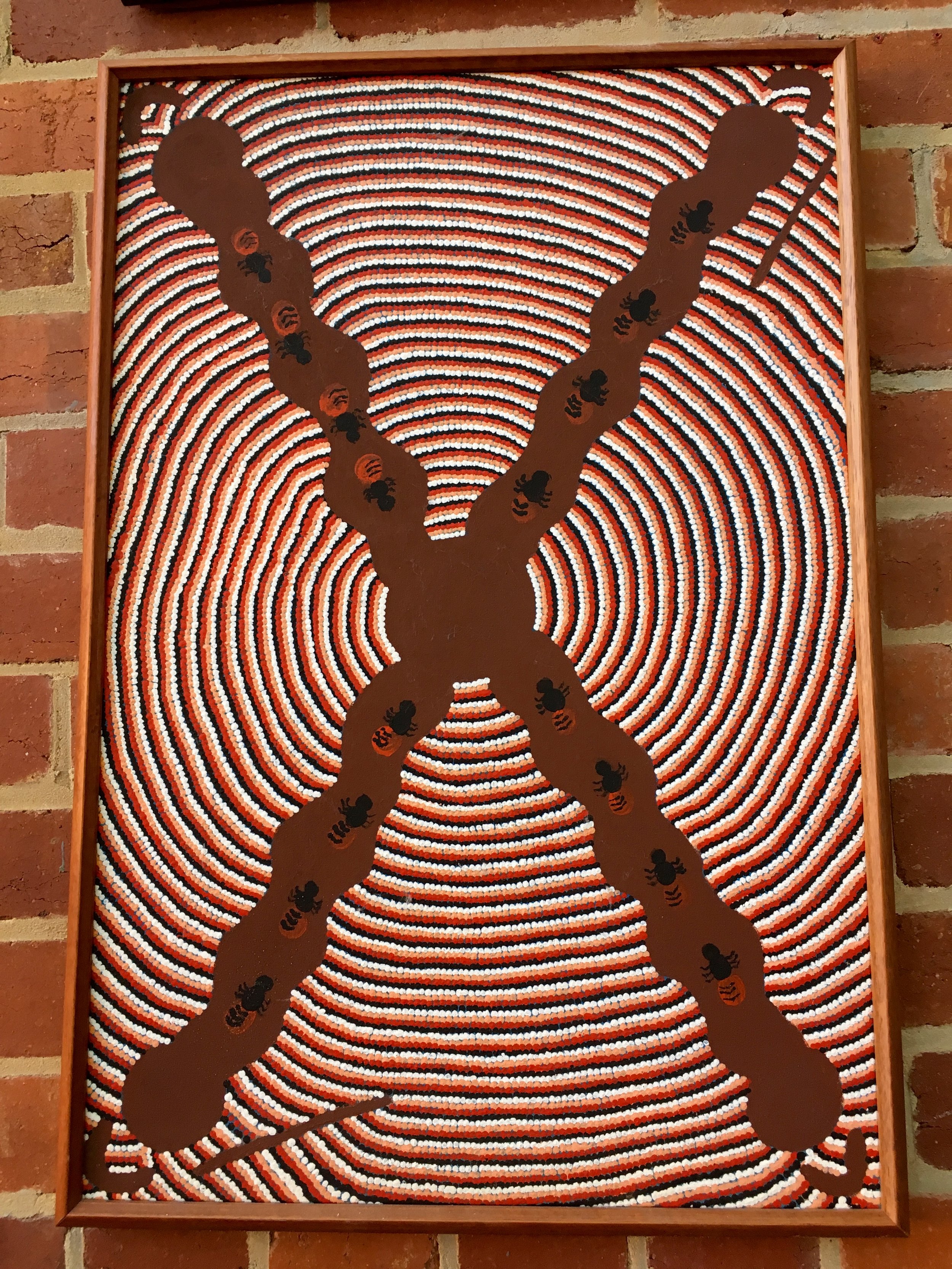
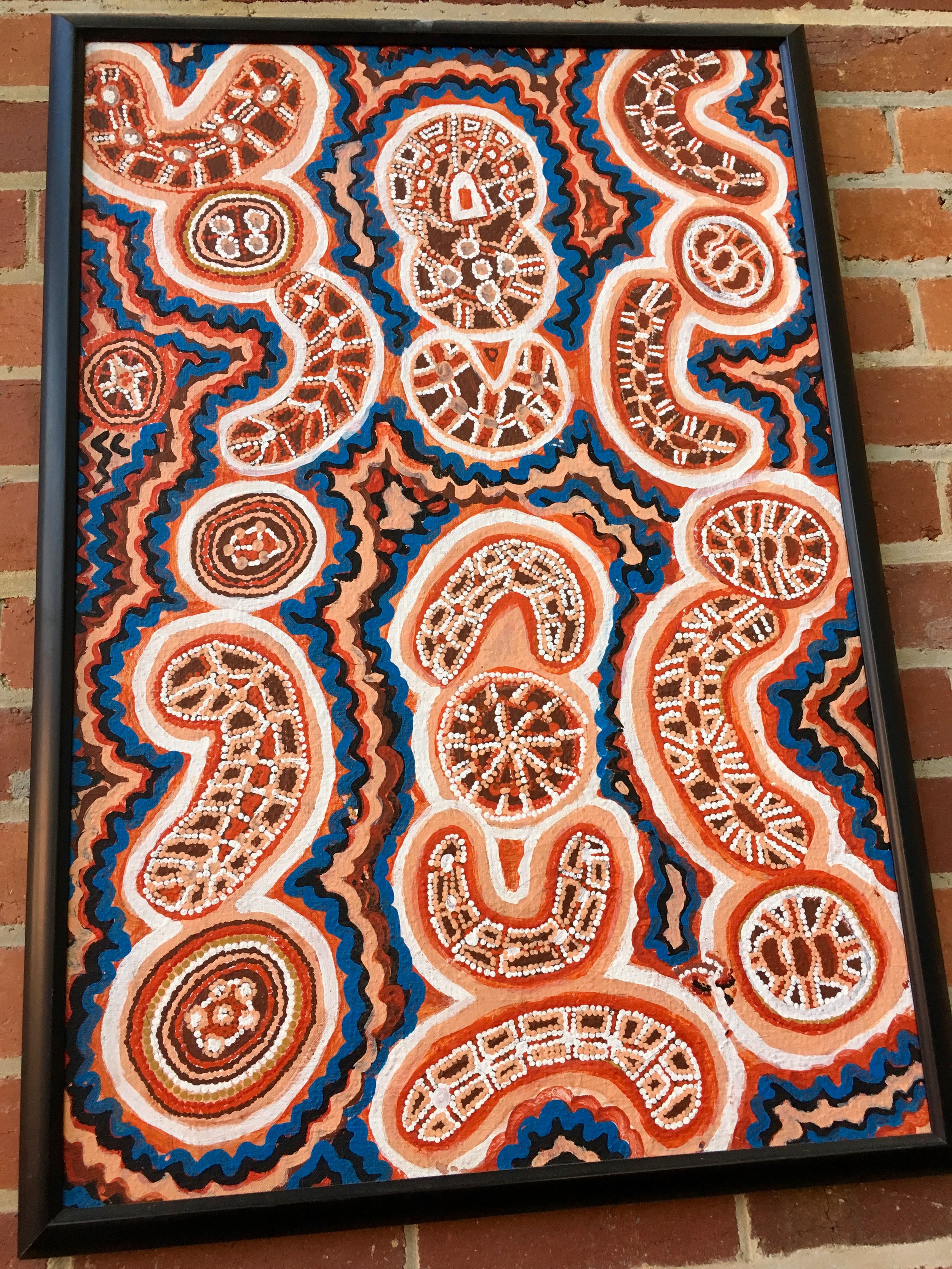
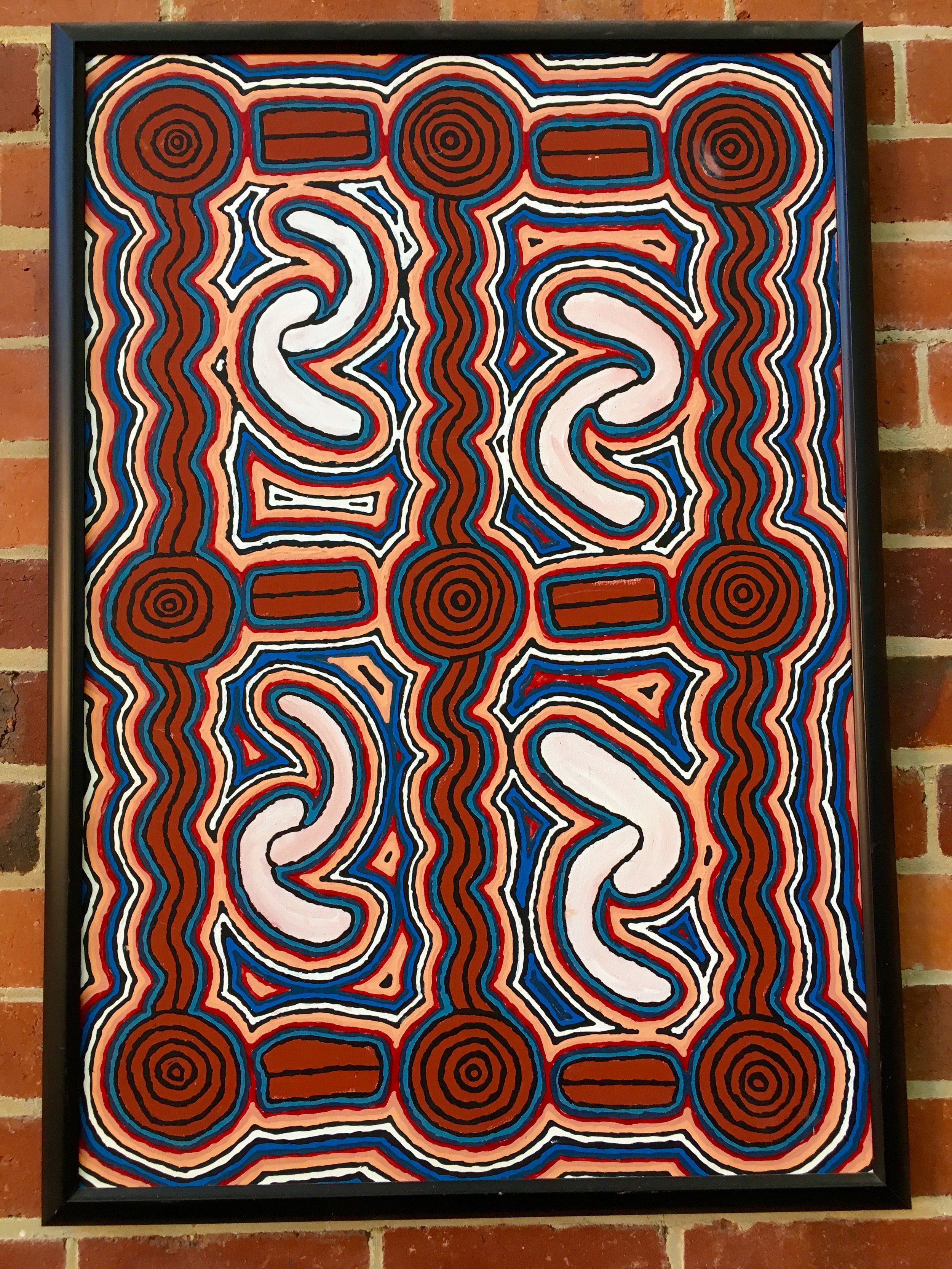
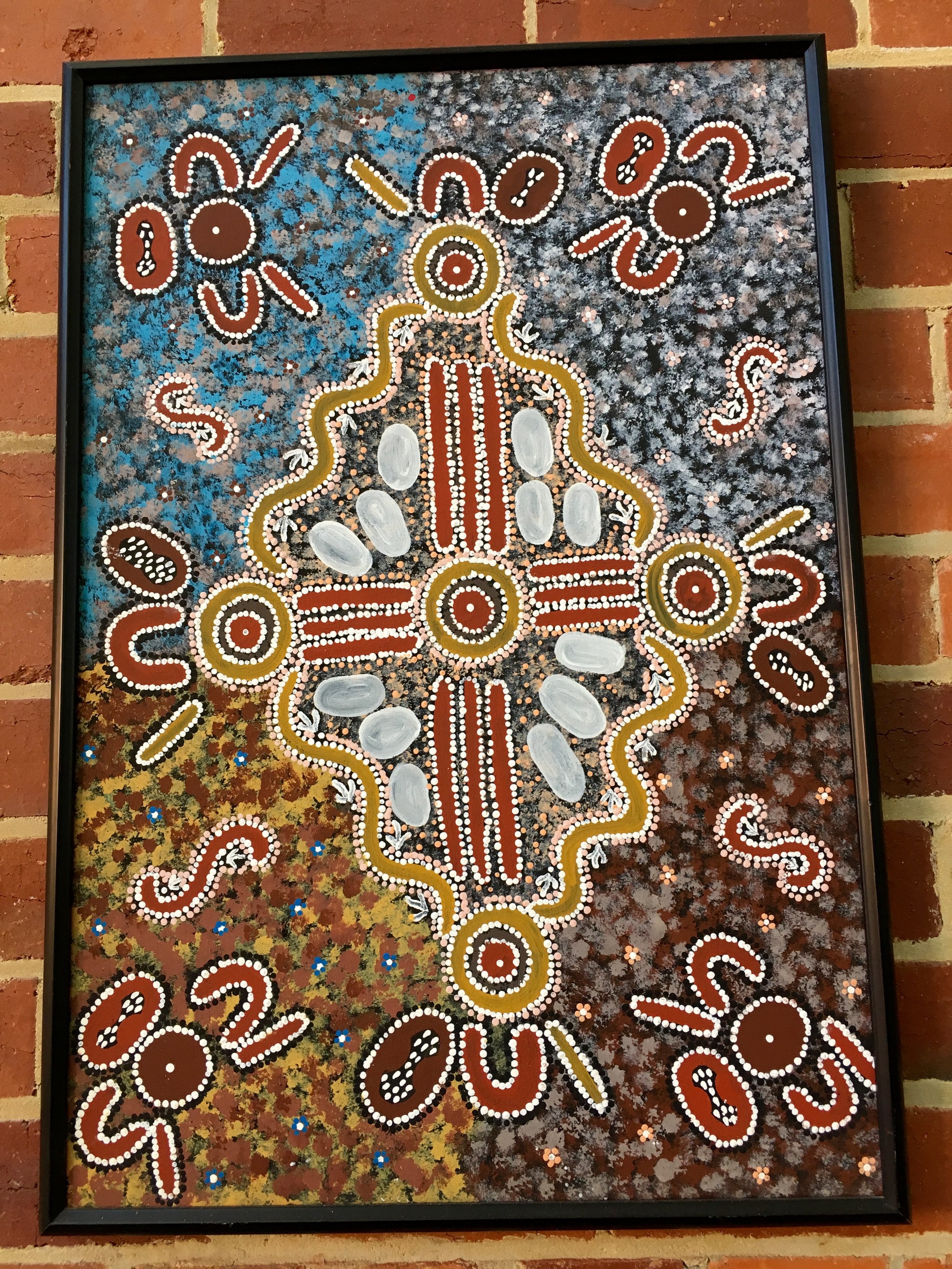
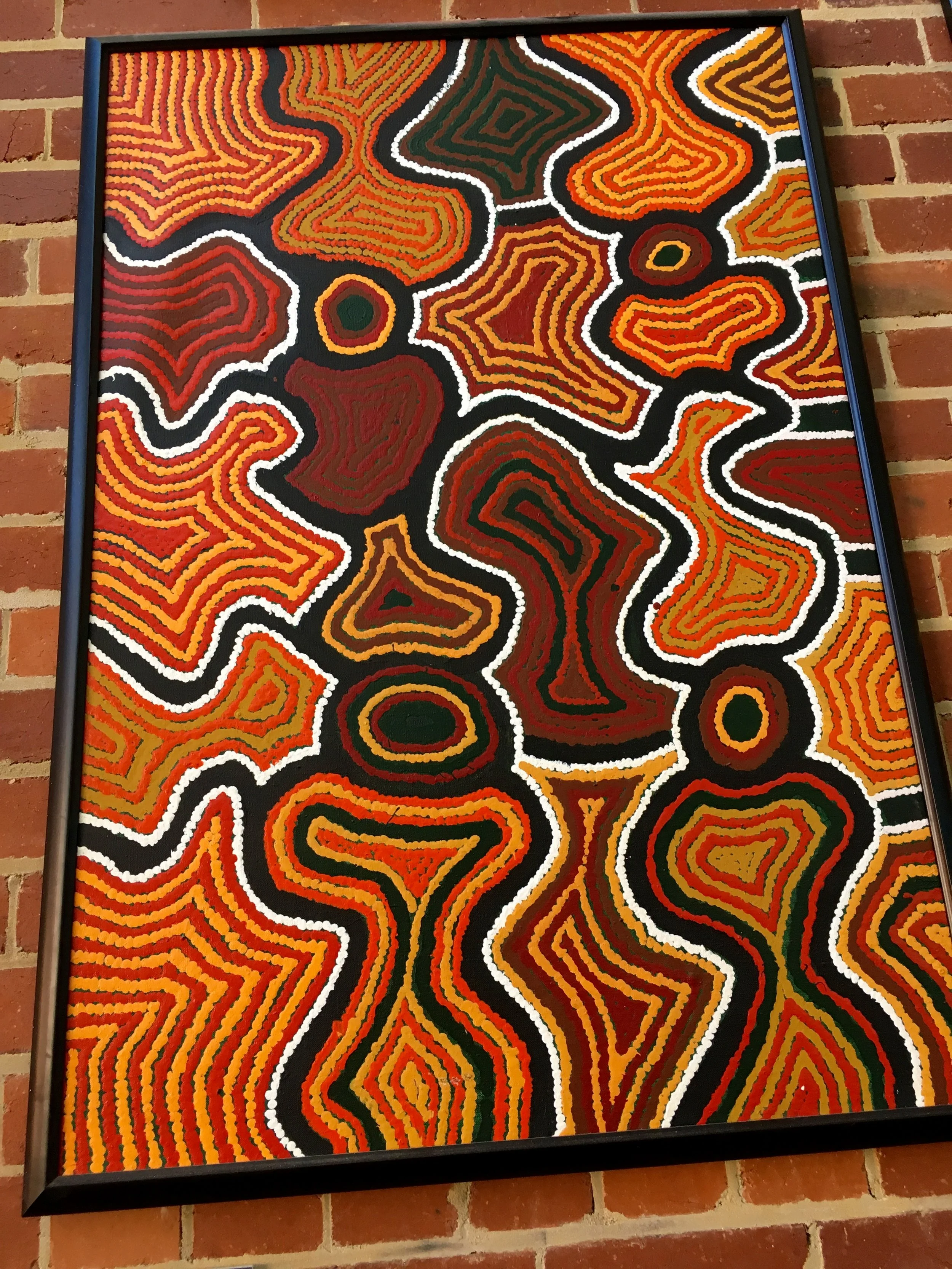
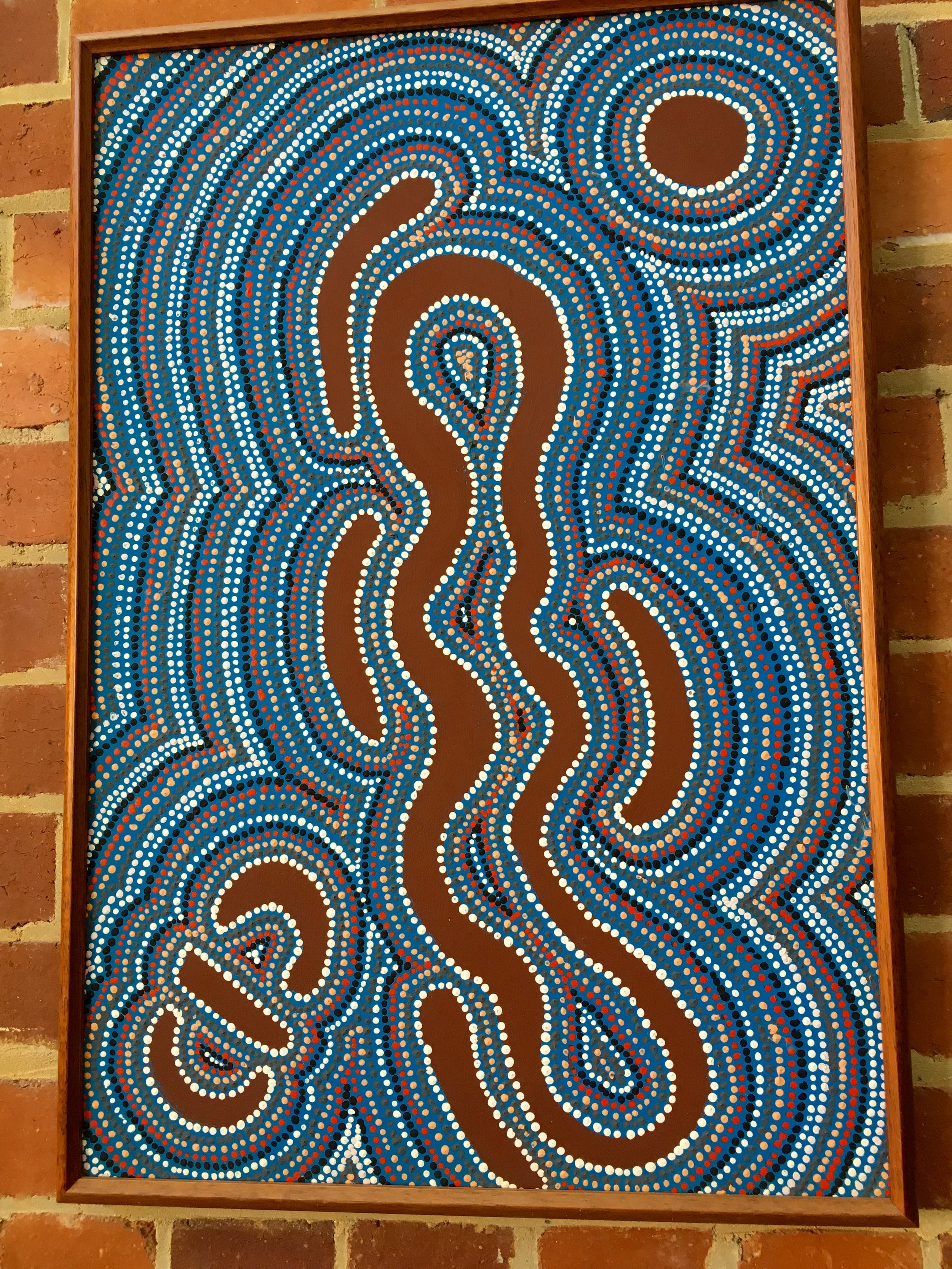
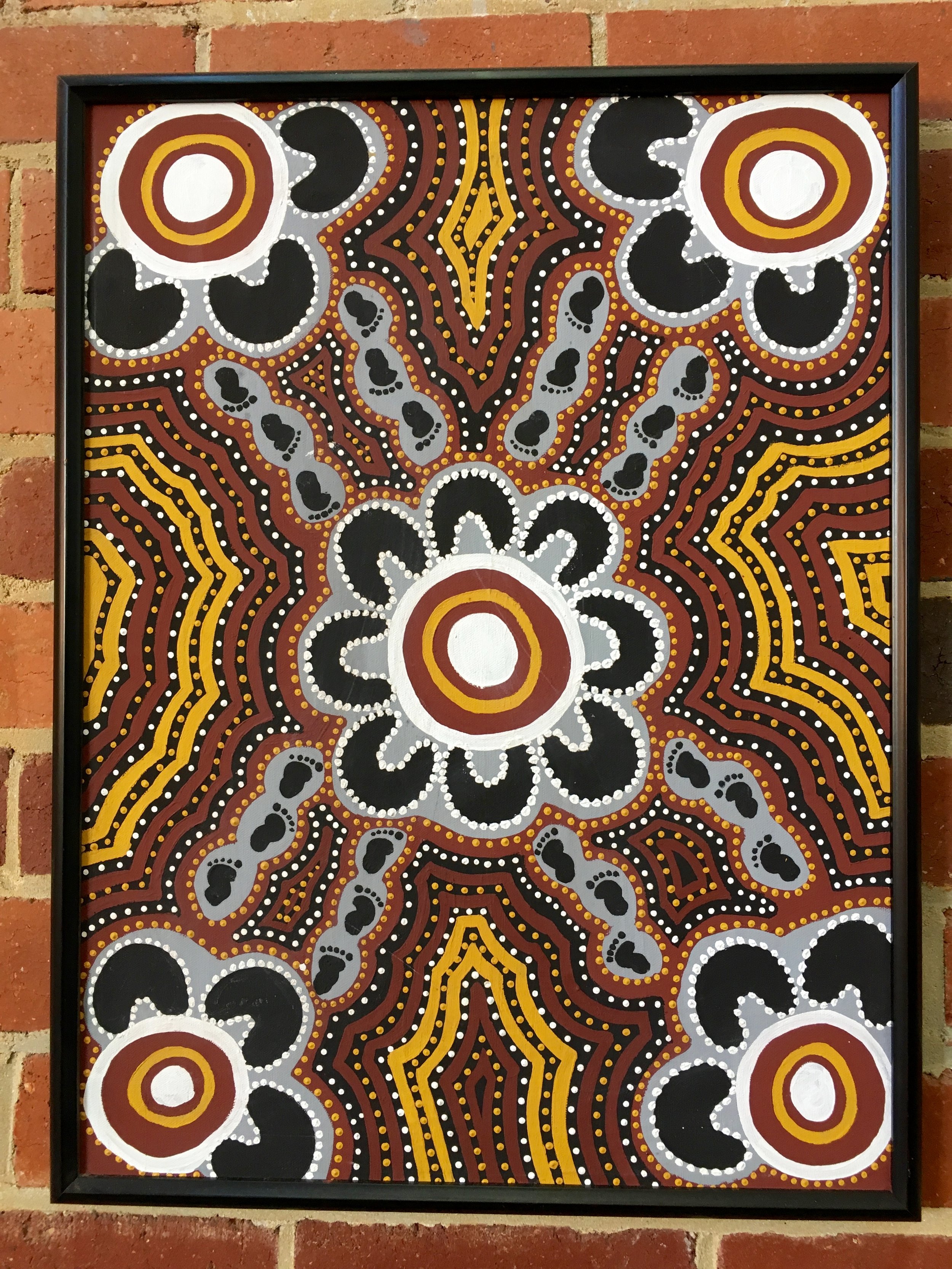
Our everyday life has become pleasantly busy. In addition to the Australian history class, we have been attending lectures for a fabulous Archaeology class taught by Professor Shane Burke. Keeping up with school for the Harry and Danny is a daily challenge that I hope I'm not totally failing at. Dave has become friends with the resident biochem professor and goes to his lectures and labs. Plus he teaches his class Monday, Tuesday, and Wednesday evenings.
We still manage to fit in lots of fun adventures; more on that in the next post! I'm so proud that Harry and Danny have been game for everything. They rarely complain and roll with the punches. Hopefully they won't exaggerate our missteps too much when telling the stories back home! Cheers!





